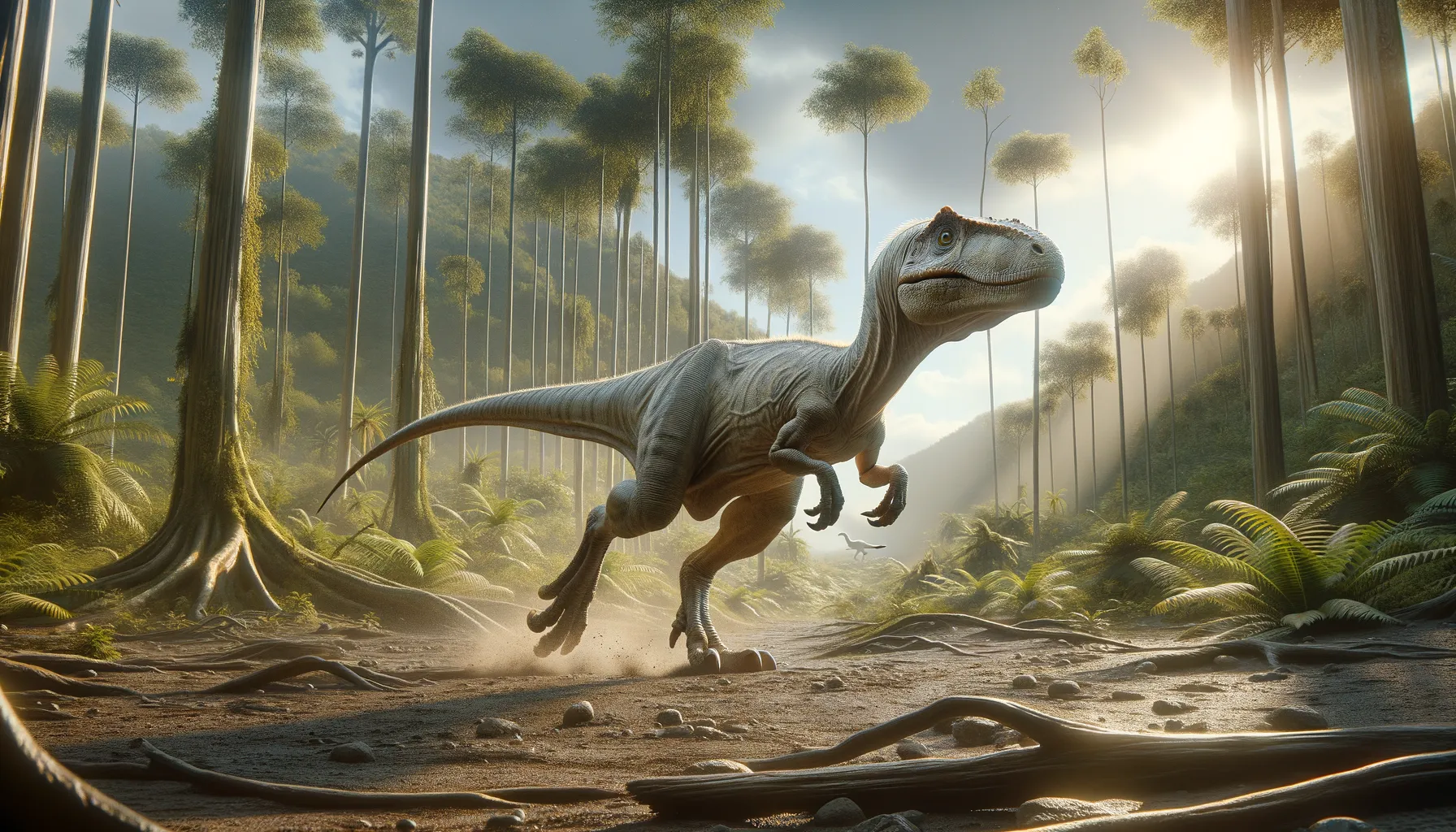
Podokesaurus
Swift as the wind, ruler of the Jurassic plains.
Period
Jurassic
Length
Length was approximately 2 meters from head to tail.
Height
Stood about 1 meter tall at the hips.
Weight
Weighed around 10 kilograms, quite light for a dinosaur.
Podokesaurus was a small, agile dinosaur that lived during the early Jurassic period. With its lightweight body and long legs, it was well adapted to a life of swift movement, aiding in both catching prey and avoiding predators. Discovered in North America, its fossils are rare, providing a glimpse into the diverse ecosystem of its time. Its speed and agility were among its most notable traits.
Diet
Podokesaurus was a carnivore, likely feeding on small animals such as insects and small vertebrates. Its sharp teeth and fast reflexes would have been well-suited for catching prey.
Hunting
Hunting in forests and open areas, Podokesaurus relied on its speed and agility to catch unsuspecting prey. Its lightweight build allowed it to pursue animals quickly, making the most of its swift bursts of speed.
Environmental challenges
Podokesaurus faced environmental challenges like changing landscapes and climatic conditions. Dense vegetation and rocky terrains required adaptability to efficiently hunt. Predators were also a constant threat, so staying hidden and fast was crucial for survival. Additionally, competition for food with other small carnivores was a significant challenge.
Speed
Podokesaurus was a fast runner, capable of swift movements.
Lifespan
Estimated lifespan of around 10 to 20 years.
First discovery
First discovered in Massachusetts by Mignon Talbot in 1911.
Fun Facts
- Podokesaurus was a small dinosaur, measuring only about 3 to 5 feet long, making it roughly the size of a modern dog.
- Its name means 'swift-footed lizard', highlighting its likely ability to run quickly.
- Podokesaurus lived during the Early Jurassic period, around 190 million years ago.
- It was discovered in Massachusetts, making it one of the few dinosaurs known from this region of the United States.
- Podokesaurus is believed to have been a carnivore, likely preying on small animals and insects.
- The dinosaur was named by paleontologist Mignon Talbot, who was one of the first women to name a dinosaur.
- Sadly, the original fossil specimen was destroyed in a fire, but detailed drawings and descriptions remain.
Growth and Development
Podokesaurus underwent rapid growth in its early life stages, reaching maturity quickly to evade predators. The young were likely independent soon after hatching, developing their hunting skills early. Growth rates suggest it adapted to seasonal changes, adjusting its foraging strategies accordingly.
Habitat
Podokesaurus inhabited lush, forested environments interspersed with open plains. It thrived in regions with abundant insect life and small vertebrates for food. Seasonal rivers and wet areas provided water resources, while dense vegetation offered shelter from larger predators.
Interaction with other species
Podokesaurus coexisted with herbivorous dinosaurs and small mammals, occasionally competing with other carnivores. Its speed allowed it to avoid direct confrontations. In pack situations, it might have driven off larger predators by intimidating them with swift movements and distraction tactics.
Natural lifespan
Podokesaurus had a natural lifespan of around 15 years in the wild.
Reproduction
Podokesaurus likely reproduced by laying eggs, with nests possibly built in secluded areas. Clutches contained multiple eggs to increase the survival rate of offspring. Parental care was minimal, with hatchlings expected to fend for themselves soon after birth.
Social behaviour
Podokesaurus may have exhibited solitary behavior, depending mainly on stealth and speed for survival. However, juvenile groups could have formed for protection against predators. During the breeding season, males might have displayed vibrant colorations to attract females.
Fossil locations
Fossils of Podokesaurus have been primarily found in Massachusetts, USA. The discovery was significant due to the rarity of theropod fossils from the Jurassic in North America. Its fossils contribute valuable information to the understanding of early theropod evolution.
